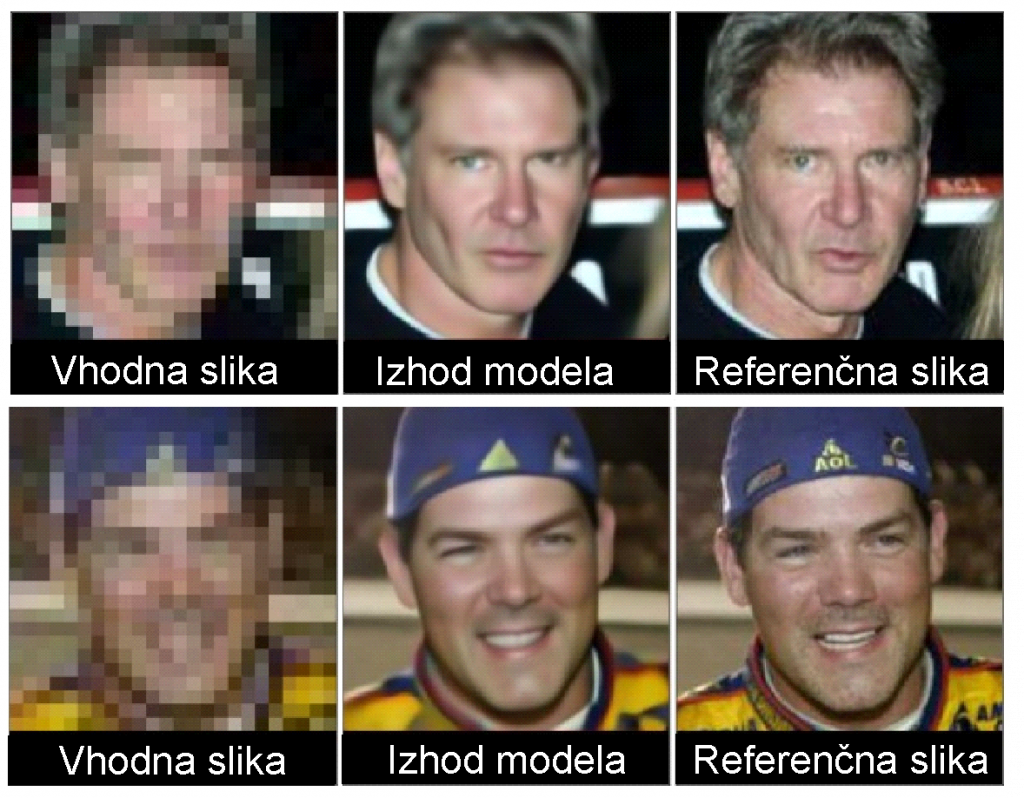The resolution of image data is of key importance in people’s ability to recognize the content of images, as well as in various computer vision tasks, including object detection, tracking and scene labelling.
Klemen Grm and Vitomir Štruc of LSI, along with Walter Scheirer of the University of Notre Dame, US, developed a novel deep convolutional neural network model for face super-resolution, which is capable of increasing the resolution of face images by a factor of 8. As shown in the figure 1, the developed model is capable of producing convincing high-resolution face images from inputs as small as 24×24 pixels in size. The key novelty in the developed model is an approach to training the super-resolution models which utilizes a newly formulated loss function that explicitly causes the model to learn to reconstruct those details in face images that correspond to better face recognition performance.
The model was developed within the scope of the PhD work Klemen Grm. The work has previously been awarded the EAB Max Snijder award in September 2019. The award represents one of the three distinctions awarded by the European Association for Biometrics (EAB) every year to the best PhD theses in Europe related to the field of biometrics. Now, the excellence of research was also recognized by the university of Ljubljana, by placing it amongst the top-10 research achievements of the university in 2019. An article describing the research work was recently accepted for publication in the IEEE Transactions on Image Processing (SCI IF 2018: 6,79).

Publication:
Klemen Grm, Walter J. Scheirer, Vitomir Štruc, Face hallucination using cascaded super-resolution and identity priors, IEEE Transactions on Image Processing (SCI IF 2018: 6,79), accepted 2019.
Available in open access: https://ieeexplore.ieee.org/document/8866753